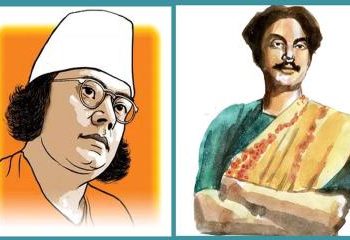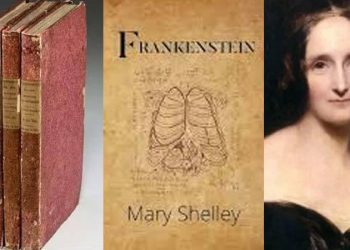
Categories of Shakespeare’s Plays
The three types of plays Shakespeare wrote are tragedies, comedies, and histories. Tragedies are often marked by death and sadness, while comedies include happy endings (and often a wedding). Histories reflect a dramatization of historical monarchs and periods of time from Shakespeare’s perspective.
Although the exact dates that Shakespeare penned each of his plays can’t be known, the Royal Shakespeare Company provides us with estimates (indicated in parentheses below). The first collected edition of Shakespeare’s plays were published in 1623 as the First Folio.
Tragedies
William Shakespeare knew how to strike a chord in the tragedy department. Following the Greek tragedy tradition, characters in Shakespearean tragedies often have tragic flaws that lead to their ultimate downfall. Here are the tragedies penned by Shakespeare:
- Titus Andronicus (1591 – 1592)
- Romeo and Juliet (1595 – 1596)
- Julius Caesar (1599)
- Hamlet (1600)
- Othello (1604)
- Timon of Athens (1604 – 1606)
- Macbeth (1606)
- King Lear (1605 – 1606)
- Antony and Cleopatra (1606 – 1607)
- Coriolanus (1608)

Comedies
In the context of Shakespearean plays, “comedy” doesn’t necessarily mean it’s funny (though it often is). A comedy is just one with a happy ending, usually involving a wedding. Shakespeare filled theaters with some of these comedies:
- The Taming of the Shrew (1580 – 1590)
- The Two Gentlemen of Verona (1590s)
- The Comedy of Errors (1594)
- A Midsummer Night’s Dream (1595 – 1596)
- Love’s Labour’s Lost (1595 – 1596)
- The Merchant of Venice (1596 – 1597)
- The Merry Wives of Windsor (1597 – 1601)
- Much Ado About Nothing (1598)
- As You Like It (1599)
- Twelfth Night (1601)
- Troilus and Cressida (1601 – 1602)
- All’s Well That Ends Well (1603 – 1606)
- Measure for Measure (1604)
- Pericles, Prince of Tyre (1608)
- Cymbeline (1610)
- The Winter’s Tale (1611)
- The Tempest (1611)

Histories
There’s no doubt Shakespeare found the royal court to be something of an enigma. He crafted tales of betrayal, love, and murder, all within the king’s court. We can learn a lot about this period in time through these plays:
- King John (1595 – 1597)
- Richard II (1595 – 1596)
- Richard III (1592 – 1594)
- Henry IV, Part 1 (1596 – 1597)
- Henry IV, Part 2 (1597 – 1598)
- Henry VI, Part 1 (1592)
- Henry VI, Part 2 (1591)
- Henry VI, Part 3 (1595)
- Henry V (1599)
- Henry VIII (1613)
Lost Works
There are a few plays that Shakespeare may have authored or co-authored, as well. These plays were either lost or simply not positively identified as his work. They include:
- Cardenio
- Edward III
- Love’s Labour’s Won
- Sir Thomas More
- The Two Noble Kinsmen















Discussion about this post